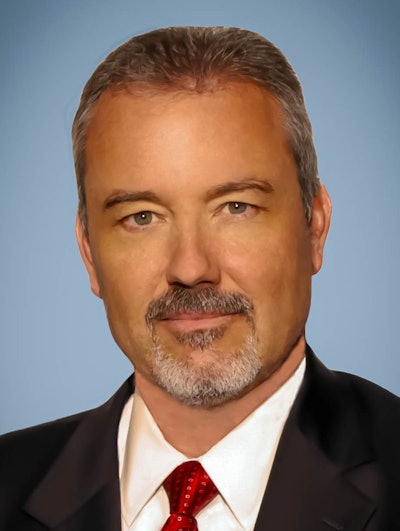
The radiology job market has intensified over the past year, with a marked increase in job offers across the U.S. The demand for radiologists in a dwindling pool of applicants means that radiology recruitment will become increasingly difficult for private practice groups. Determining future staffing requirements and developing recruitment plans is an advantageous step to protect against the market trend.
Yet there is a more effective step to prepare for the future and avoid the cost and stress of recruiting a new radiologist: avoid radiologist turnover by retaining the ones you have.
How do you sustain physician retention and a solid group core? There are two main ways:
- Understand the reasons why radiologists leave practices for new jobs.
- Implement change to remedy issues and keep your team happy.
Over the years, Radiology Business Solutions (RBS) has worked with hundreds of radiologist candidates and learned the key reasons why they choose to leave a practice. We have determined the essentials for keeping radiologists happy and comfortable. We recognize that there are some factors in physician transitions that cannot be overcome, but proactive groups with positive work environments will be able to mitigate many of the issues we hear about every day.
This article will outline (in no particular order) the major issues practices face and offer advice to promote harmony and increase staff retention.
Partnership (or lack thereof)
 Daniel Corbett of Radiology Business Solutions.
Daniel Corbett of Radiology Business Solutions.Radiologists commonly leave groups because partnership and parity expectations are not met. They expect to be offered partnership within the time frame established by the practice and detailed during the hiring process. If partnership is not offered or if it is delayed without a reasonable explanation, expect the radiologist to look for other opportunities.
Unfortunately, some groups use this "delay or deny" practice as a tool to keep the current partners at a higher income level. This dishonesty gives groups a reputation in the market as "churn and burn" practices. Most of these groups are in highly attractive areas where there is no shortage of recently trained radiologists willing to take the chance on becoming the exception.
Unfortunately for the rest of us, any unintentional delays to partnership can send the wrong message to radiologists. A clearly detailed partnership track with the expectations of performance to attain partnership is a critical component for recruiting and retaining high-quality radiologists. It is well worth the time and effort for a group to be proactive and adhere to its partnership commitments as a professional organization. This requires organization and follow through -- both hallmarks of good group practices.
Radiology group dysfunction/dishonesty
Whether it's real or perceived, dishonesty or dysfunction in a practice is a primary driver of radiologist turnover. Over the past two decades, RBS consulting teams have evaluated dozens of private radiology practices and witnessed unbelievable levels of dysfunction and poor behavior. Greed, manipulation, deceit, anger, outbursts, swearing, and generally unacceptable behavior are hallmarks of these dysfunctional groups.
These behaviors can drive deep wedges between group partners and create a highly stressful working environment. In many instances, group radiologists elect to leave instead of dealing with bad behavior and dysfunction. In fact, a single bad apple can cause disharmony for the entire group. Even well-intentioned partners may have difficulty identifying or addressing the root cause of the dysfunction.
There are many ways to bring in help, work through issues, and promote a more rewarding environment. Failure to take steps to address internal strife ultimately leads to external job searches and resignations. Again, being proactive can help remedy the issue before it grows out of control.
Group acquisition and lost contracts
A newer phenomenon in radiology is the corporate acquisition of private practices. There are many examples where group partners are paid large buyouts while recently hired associates get nothing but the opportunity to stay on as an employee or leave. In most cases, the choice is obvious. If a group is considering a sale of the practice, hiring a new radiologist without explaining the potential sale is the lowest form of deceit. The same is true for losing a hospital contract.
For example, RBS was contacted by a young radiologist looking for a new job. He moved his family to join his first practice, only to be let go three months later when the group lost its contract at the hospital where he was recruited to work. Most hospital service contracts have a 90- to 120-day notice period -- the group certainly knew the loss would occur but allowed the radiologist to move his family and start work anyway. The expense and stress forced upon this young radiologist was immense. A group considering a sale, merger, or acquisition should be transparent with all physicians.
Financial dishonesty
Misleading radiologists about salary and bonuses is a top deal breaker for most employees. Many groups do not share actual partnership income data with new radiologists, often just verbalizing rough numbers. If the income or bonus is significantly lower than what is expected, chances are you may need to start the radiologist recruiting cycle again.
Sometimes groups will disclose a current partner's pay without clarifying the drop it will take once it is diluted by another partner. Retaining quality radiologists starts with transparency, especially when it comes to income. Transparency is achieved by sharing information, including physicians in group discussions, and listening to all members' perspectives.
Workload expectations
When recruiting, an organized group will provide clear data on the volume, shifts, and call expected of the new radiologist. Unfortunately, workload expectations are a major cause of turnover in private practice. A radiologist recently out of training will need time to reach the productivity levels of experienced partners. Many groups account for this ramp-up time, but others push new hires too hard, leading to stress, burnout, and eventually job changes.
Providing a spreadsheet of the group's current productivity and expectations to a candidate is an effective remedy for conflicting expectations. More important, however, is having a thoughtful plan regarding workload, job assignments, and fundamental fairness. It is not always possible to staff sites and worklists in a completely equal fashion. There are competing interests that need to be balanced, including the expectations of the hospitals, the needs of the medical staff, and the desire for specialty interpretations.
A group using a well-planned, fair, and transparent system to create work assignments and monitor productivity will engender support and loyalty. Conversely, a group that makes these important decisions arbitrarily, in secret, and without explanation will lose team members' trust. Having neutral influences, administrative oversight, and a scheduling/productivity committee may be a logical step toward overcoming this concern.
Leadership/management deficiencies
Another cause of radiologist turnover is frustration with ineffective leadership and management. A poorly led practice causes undue stress and financial insecurity for the radiologists. Lack of proper administration can affect income, workload, efficiency, quality documentation, regulatory compliance, and hospital relations. If the stress becomes too great, radiologists will surely search for better-managed practices where the focus lies in clinical radiology rather than business issues and politics.
Some groups have practice managers who are unqualified to manage a complex, multimillion dollar business like a radiology practice. Others have managers who play favorites, demonstrating loyalty to a few group members at the expense of the rest. RBS has often seen a change of leadership destroy a practice.
As one example, a managing senior radiologist in a 15-radiologist practice retired without mentoring a replacement, leading to complete chaos within the group. The manager had tight control over the practice vendors, work schedule, and infrastructure, and after 30 years of leading, he left his group without a life vest. This placed enormous stress on the remaining radiologists, causing several of the best producers to leave. This example has manifested in different forms, usually leading to the need for a major intervention and restructuring of the group to survive.
As the field of radiology has grown increasingly complex, the expertise needed to manage a multimillion dollar radiology practice has increased to match it. Radiology practices should have a leadership transition plan with mentoring of other radiologists to lead the practice and provide proper operational management.
Location and family
Finally, location and family can strongly influence a radiologist's interest in accepting and keeping a position. If a radiologist finds an offer in a more desired location or closer to family, he or she will be inclined to relocate. Maybe more importantly, if a spouse is unhappy after moving to a new, unfamiliar location, there will be a strong push to seek other positions, no matter how happy the radiologist is with the group. If the spouse is miserable, it is not a matter of whether they will move, but when.
While location and proximity to family is beyond a group's control, proper communication during the recruitment phase can prevent a short employment that puts a burden on both the employer and employee. Always make sure there is communication between the group and spouse. Always encourage a candidate's spouse to attend the interview visit and interact with the group. Any perceived uneasiness or pushback from the spouse should be noted, because this resistance may be a sign of a short employment.
Proper radiologist staffing = security
Maintaining a proper staffing level may be the most important factor for a radiology group's stability and security. Short-staffed groups experience high levels of stress due to high workloads, less vacation, more weekend hours, slower turnaround times, and decreased service levels for hospitals and medical staff. It has been RBS' experience that the main reason private practices lose their hospital contracts is because they are short-staffed, which leads to a decrease in service levels at the hospital.
It has been reported that 8% of practicing radiologists in the U.S. are at or over retirement age. With the growing economy and record high stock market, we can expect the increase in job openings to continue as more senior radiologists retire. Retirements are unavoidable, but losing other productive radiologists is the avoidable downfall for busy private practices.
Groups that identify internal issues and take corrective actions to avoid dysfunction will be able to retain their radiologists and better recruit replacements for retiring radiologists. Private practices with adequate staffing levels and proper management provide a less stressful working environment and higher quality of life for the partners. Proper staffing maintains high service levels and superior hospital relationships, providing long-term security for the group and its partners.
Daniel Corbett is the chief of business development for Radiology Business Solutions, a national radiology management and consulting company. He is responsible for client staffing and has been recruiting radiologists exclusively for the past 18 years. RBS has recruited more than 500 radiologists for management client practices and other independent radiology practices.
The comments and observations expressed herein do not necessarily reflect the opinions of AuntMinnie.com.



















